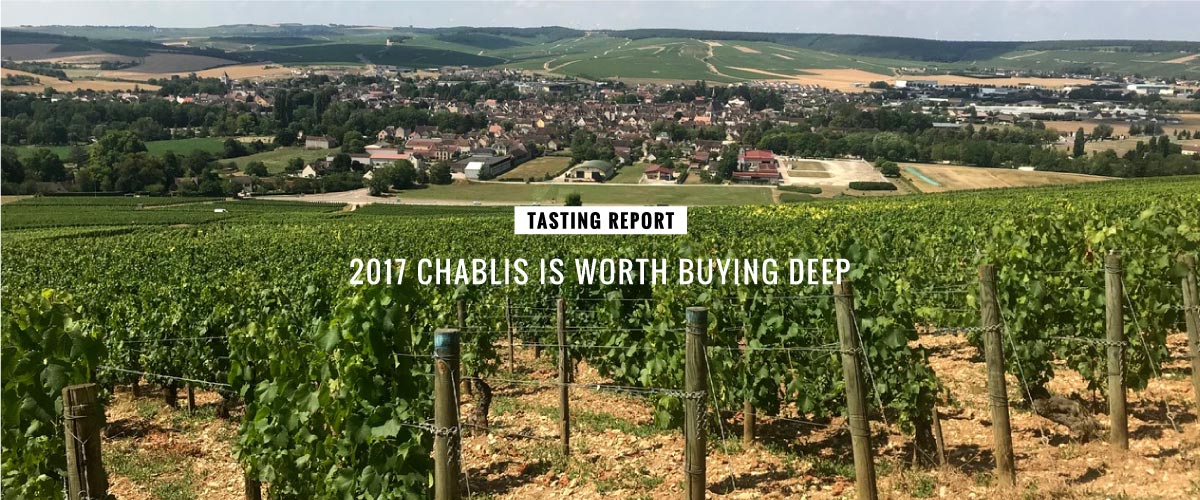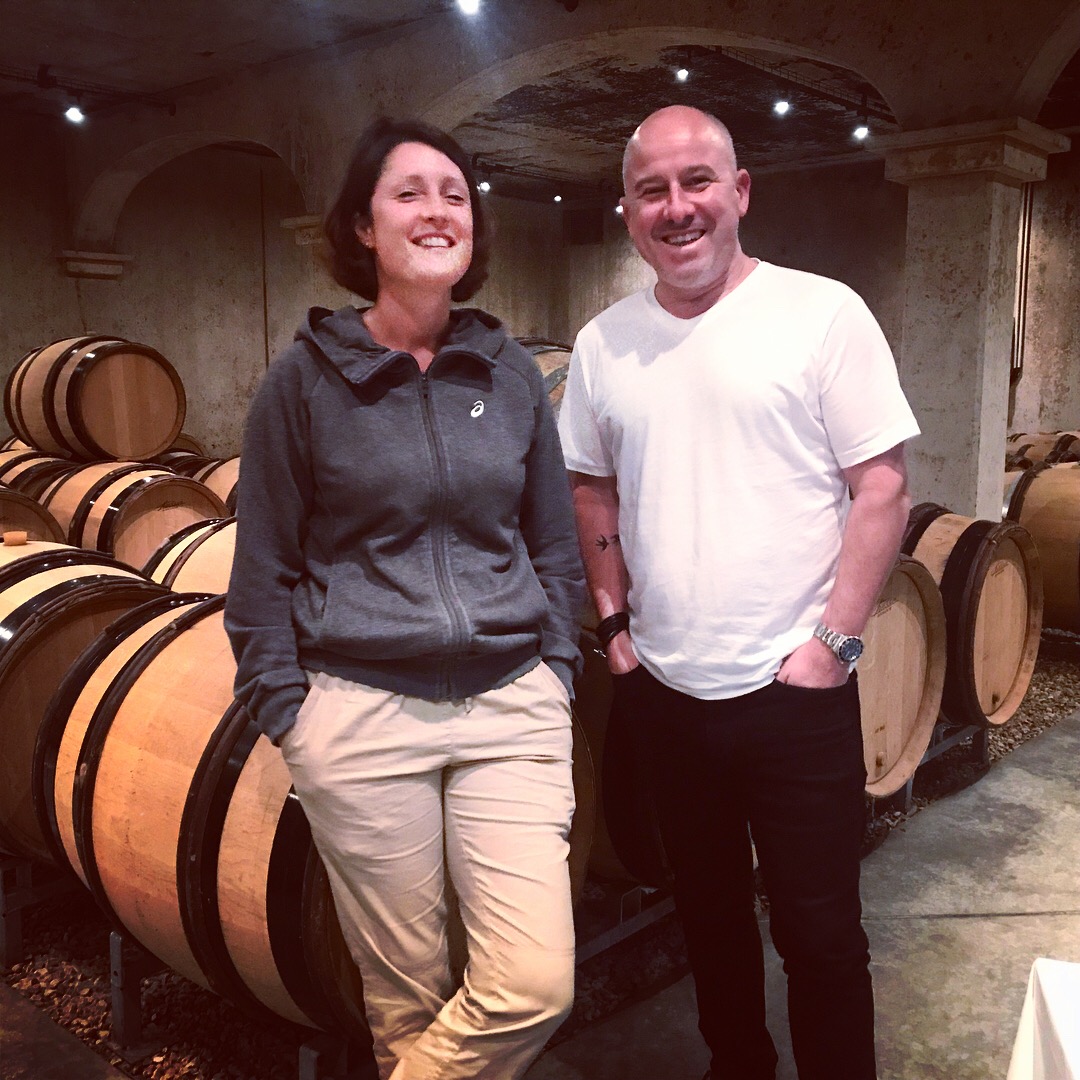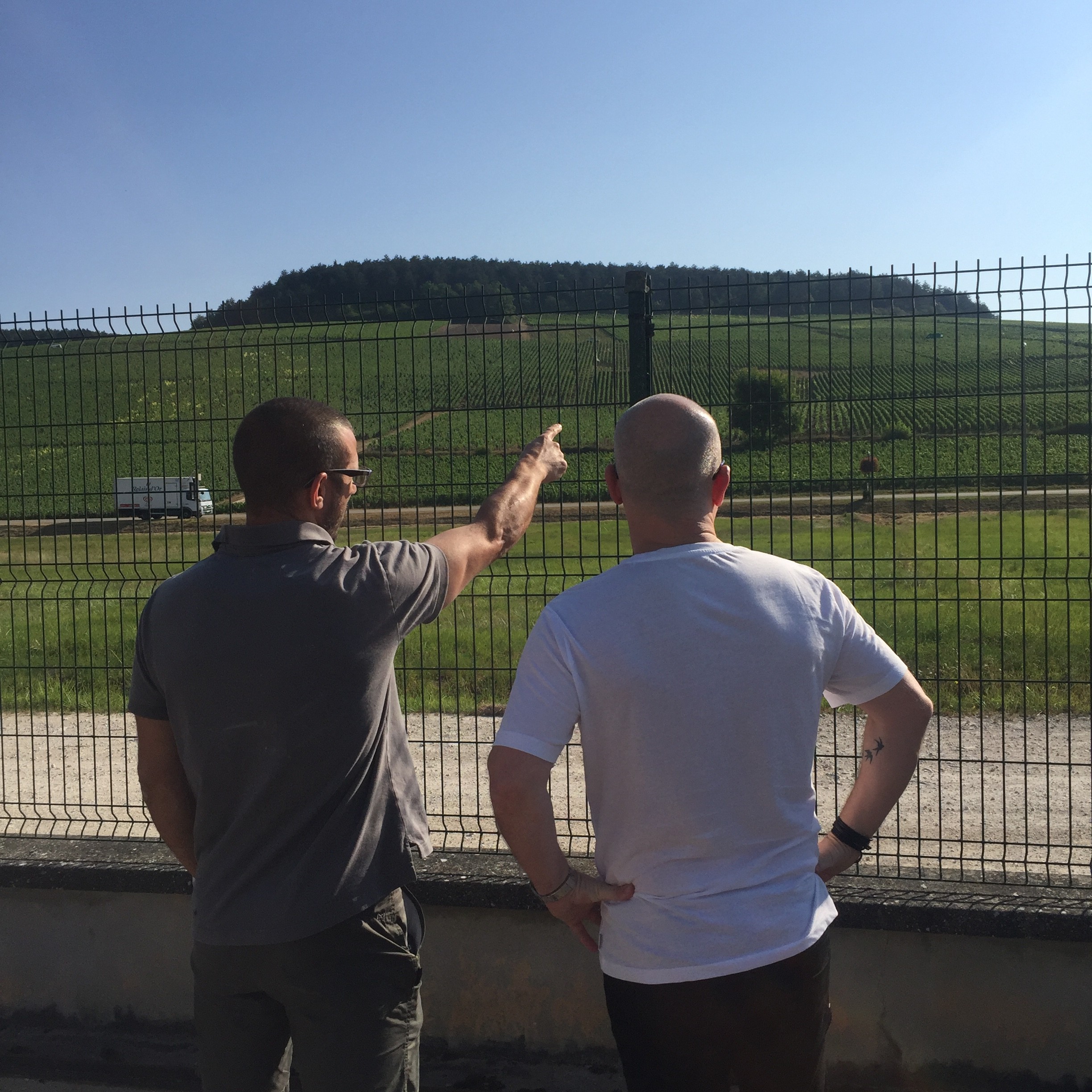2017 Chablis Is Worth Buying Deep; 2016 Less Reliable

Chablis is enjoying one hell of a moment in the sun in terms of global popularity, and so it was only fitting I headed to the region this summer to taste 20 of the top producers and research this inaugural Chablis tasting report. The directness of the wines — refined, sinewy cool-climate chardonnays grown on limestone soils — and their close dependence on terroir have made Chablis, among serious wine lovers, one of the most popular wines of our time with a likeable clique of artisanal vignerons and an aura of relative value.
Though only chardonnay may be used in the appellation, the wines are broadly appealing to a wide range of drinkers. Basic, fresh, entry-level Petit Chablis, served at parties or after-work drinks, represent the beginning of a full gamut of quality, which runs up through villages, vieilles vignes (old vines) and lieu-dit (vineyard specific) bottlings, all the way to any one of the great premier or grand cru terroirs. These top wines have the ability to mesmerize collectors with dazzlingly expressive quality.

Our contributing editor Nick Stock and Isabel Raveneau from Domaine Francois Raveneau.
But for all this popularity and versatility, mother nature has rained on Chablis’ parade in recent years, or hailed to be more accurate. The recent 2016 vintage was decimated by as much as 50 percent with extreme hail and frost. The remaining grapes were then threatened by encroaching mildew and have largely delivered wines with early-drinking, fleshy appeal. According to Patrick Piuze, one of the best producers in Chablis today, 2016 is a “comfort vintage” — a reference to its generally round, flavorsome style.
And although this report includes many wines from the 2016 vintage, the wines from 2017 are covered in considerable depth and, to my taste, well and truly outperform the 2016s for quality. A vintage that shows a great deal of promise, 2017 is more vertical than 2016 in terms of palate shape and more vibrant and energetic, with a greater sense of tension. The wines are more succulent, often characterized by a thread of lively acidity that cuts nicely through ripe-fruit flavors. “2017 is more classic,” explains Isabel Raveneau of Francois Raveneau. “It’s not quite as classic as 2014, but it has a brightness that 2016 doesn’t have.”
Raveneau also reported that 2017 crops were down by as much as 30 percent due to frost but, even at that number, I noted a collective sigh of relief in the region after the dramatic losses of 2016. Benoit Droin of Domaine Jean-Paul et Benoit Droin explains:
“If we don’t talk about the problem of yield, 2017 was a very good vintage. Temperatures were not too hot or too cold, good rains arrived at the right time and the vintage delivered good maturity and concentration at harvest. So you have acidity and concentration. A blend of 2014 (acidity) and 2012 (fruit) perhaps?”
It’s interesting to note that elsewhere in Europe 2016 and 2015 tend to be considered superior vintages to 2017. Of course, a warmer vintage is usually a boom in marginal climates such as Chablis, but 2017 also saw particularly cold nights, keeping acidities generally higher than in previous years. In addition, opportune but not excessive rainfall kept dilution in the grapes to a minimum.
Can 2017 be considered a truly classic vintage in terms of terroir dictating the order of quality? Droin’s 2017s certainly sang this tune. Tasted from tank just prior to bottling, the wines were uniformly great; it was a tasting in which every single wine performed exactly to script. They communicate a fundamental understanding of each parcel while offering incredible value and enjoyment from Petit Chablis right the way through to the Grand Cru Les Clos.

Benoit Droin of Domaine Jean-Paul et Benoit Droin and Nick Stock beneath the hill of Les Clos.
Isabel Raveneau hosted the tasting at Francois Raveneau, and the slew of 2017 Grand Cru wines tasted, as well as the elite 1er Cru Montée de Tonnerre, were scintillatingly powerful, fresh and distinctive. Les Clos shined the brightest, though with barely a shard of light between it and the Valmur, Blanchots, Butteaux and Montée de Tonnerre. These are exceptional wines. Their extreme weight and density are simply astonishing and they underline considerable cellaring potential.
Vincent Dauvissat’s 2017s are just as inspiring. Whereas Raveneau delivers unctuous texture with immense power and drive, Dauvissat finds the apex within a place of elegance delivered with high-wire tension. These wines are fueled by refinement and driving acidity. For me, the perfect marriage of Dauvissat’s style with vineyard site comes in the shape of the Grand Cru Les Preuses. The racy and energetic combination here is exhilarating to a level that chardonnay can rarely reach — in a word, breathtaking. Dauvissat’s 2017s are precise and exacting; they are great wines across the board.
The affable and quietly-spoken Laurent Tribut, brother-in-law of Vincent Dauvissat, who was schooled in the cellar by Vincent’s father René, also made some pared-back, refined and disciplined Chablis. The quality of Tribut’s 2017 basic Chablis is a cut above the rest and this standout wine outguns many a competitor’s Premier Cru bottlings.
Whilst there’s a well-established generation of producers like Vincent Dauvissat, Laurent Tribut and Francois Raveneau leading from the top, there’s no denying that the next generation of makers is already pushing hard. Good times lie ahead in Chablis, but, for now, buy 2017s with confidence. — Contributing Editor Nick Stock